Science Daily News | 23 Jun 2023

Views (128)
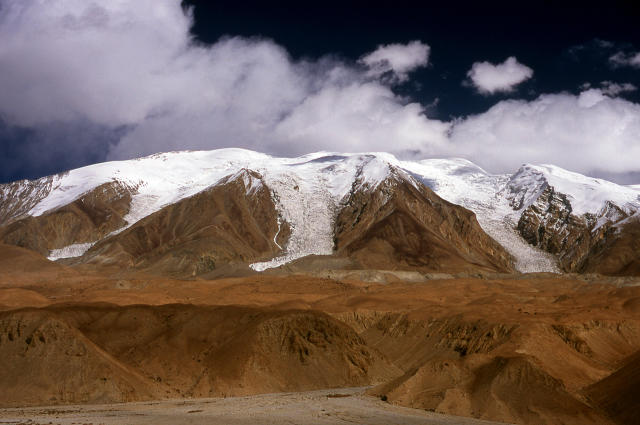
Ancient galaxy reveals a surprising way to annihilate a star
Astronomers were surprised to see a new form of star death while searching for the origins of a cosmic explosion.
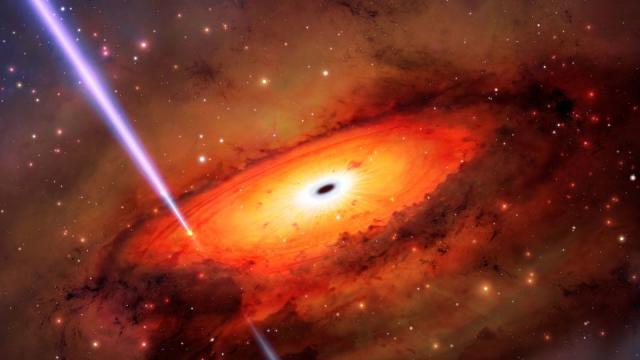
During their quest to find the source of one of the brightest and most powerful explosions in the universe, astronomers discovered a new chaotic way that stars can die.
The bright flash of gamma-ray light was first detected by NASA’s Neil Gehrels Swift Observatory on October 19, 2019. The explosion lasted just over a minute — considered long, like any gamma-ray burst, or GRB, that lasts more than two seconds.
Most GRBs have been traced back to the collapse of stars with at least 10 times the mass of our sun or to the mergers between neutron stars — the dense remnants left behind when large stars explode.
But the October 2019 burst, named GRB 191019A, came from a different source, revealing a type of stellar death that had been theorized but never observed.
“For every hundred events that fit into the traditional classification scheme of gamma-ray bursts, there is at least one oddball that throws us for a loop,” said study coauthor Wen-fai Fong, assistant professor of physics and astronomy at Northwestern University’s Weinberg College of Arts and Sciences, in a statement. “However, it is these oddballs that tell us the most about the spectacular diversity of explosions that the universe is capable of.”
Over time, astronomers have observed what they categorize as the three main ways that stars can die, depending on their mass. Lower mass stars like our sun shed their outer layers as they age, eventually becoming dead white dwarf stars.
Massive stars burn through the fuel-like elements at their core and shatter in explosions called supernovas. These violent, destructive bursts can leave behind dense remnants like neutron stars or result in the creation of black holes.
A third form of star death results when neutron stars or black holes begin to orbit one another in a binary system and spiral closer to one another until they collide and explode. But astronomers may need to add a fourth scenario to the list.
“Our results show that stars can meet their demise in some of the densest regions of the universe, where they can be driven to collide,” said lead study author Andrew Levan, an astrophysics professor at Radboud University in Nijmegen, Netherlands, in a statement. “This is exciting for understanding how stars die and for answering other questions, such as what unexpected sources might create gravitational waves that we could detect on Earth.”
Gravitational waves, or ripples in space-time first predicted by Albert Einstein and initially detected in 2016, can occur when neutron stars or black holes collide.
During their search for the origin of the gamma-ray burst, astronomers used the Gemini South telescope located in Chile to observe the afterglow of the cosmic explosion. Their observations pointed to a location less than 100 light-years from the core of an ancient galaxy.
But the telltale signs of a supernova were missing.
“The lack of a supernova accompanying the long GRB 191019A tells us that this burst is not a typical massive star collapse,” said study coauthor Jillian Rastinejad, a doctoral student of astronomy at Northwestern, in a statement. “The location of GRB 191019A, embedded in the nucleus of the host galaxy, teases a predicted but not yet evidenced theory for how gravitational-wave emitting sources might form.”
Ancient galaxies, which can be billions of years old, aren’t hubs of active star formation. But at their core, these older galaxies are filled with stars and remnants like white dwarfs, black holes and neutron stars. Compared with younger, more typical galaxies, ancient galaxies can have up to a million or more stars densely packed into their cores.
Astronomers thought it likely that stellar collisions could occur in these dense regions, especially so near to the strong gravitational pull of a supermassive black hole at the galactic center. The researchers liken it to a demolition derby, where the black hole’s gravitational influence can send stars zooming in different directions, eventually colliding in cataclysmic explosions.
But they had no evidence for any long gamma-ray bursts originating from ancient galaxies — until now.
If the chaotic environments at the center of ancient galaxies can result in stellar collisions that release bright, powerful gamma rays, why haven’t astronomers seen them before?
The researchers believe that the centers of such old galaxies are cloaked in vast amounts of gas and dust, which could obscure the gamma-ray burst. That would mean the 2019 event was an exception.
“While this event is the first of its kind to be discovered, it’s possible there are more out there that are hidden by the large amounts of dust close to their galaxies,” said Fong, who is also a member of the Center for Interdisciplinary Exploration and Research in Astrophysics at Northwestern. “Indeed, if this long-duration event came from merging compact objects, it contributes to the growing population of GRBs that defies our traditional classifications.”
Dozens of dead river fish apocalyptic, says walker
A local resident sees "maybe 100" fish floating and calls the Environment Agency.
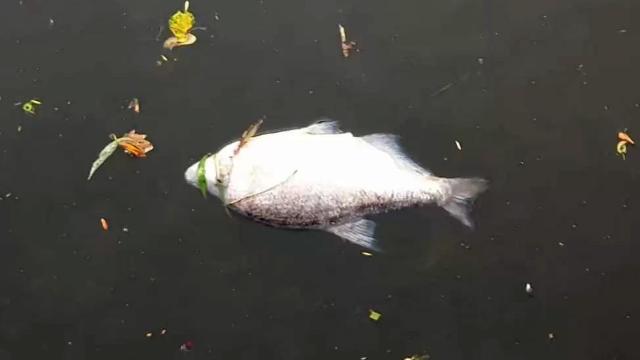
A large number of fish have been found dead in the river in Cambridge this week.
Locals reported seeing many dead fish in the stretch of the Cam between Elizabeth Bridge and Ditton Meadows.
One resident said the sight was "grim - apocalyptic even".
The Environment Agency (EA) and Anglian Water suggested the cause may be low levels of dissolved oxygen in the water.
Simone Chalkley, who lives in the city, saw "maybe 100" dead fish while walking along the bank.
"There were a lot - some single, large, others in batches of 10s and 20s - floating all the way along the edge," she said.
Ms Chalkley has lived in Cambridge for 31 years and said she had never seen so many dead fish at one time.
She added: "I walk by the river every week, sometimes more than once a week.
"The most I've ever seen is one or two dead fish at once, never anything on this scale.
"It was grim - apocalyptic even."
Ms Chalkley said she reported the issue to the EA immediately.
A spokesperson for the EA thanks people for reporting the dead fish and urged people to continue to do so.
They said: "Specialist fisheries officers inspected the river, where it is suspected that low levels of dissolved oxygen after heavy rainfall were the cause of the fish deaths, not pollution."
A spokesperson from Anglian Water confirmed the company attended the inspection at Ditton Meadows with the EA.
They said: "Both ourselves and the EA can confirm that the issue resulting in the death of the fish is not related to Anglian Water in any way."
Staffordshire student with missing fingers designs prosthetic
Luke Cox from Grantham invents a device for his final-year project that can mould to any hand.
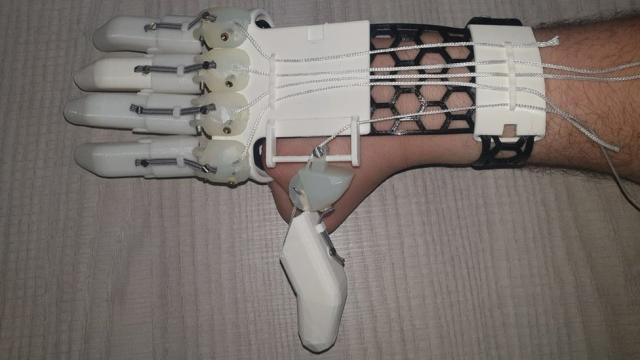
A university engineering student born with missing fingers has invented a prosthesis designed to fit any hand, young or old.
Luke Cox, 26, from Grantham, created it for his final-year project at Staffordshire University.
Its design means it could be worn throughout childhood, he said, unlike many others, potentially saving families thousands of pounds.
Mr Cox said he felt "proud" to have made something that could help others.
The student was born with Ectrodactyly, which means he has missing fingers on his right hand.
While he does not use a prosthesis himself, he said he was inspired to develop one by the cost and limitations of existing devices.
"Knowing what it's like to grow up with a disability, you [have] that empathy," he said.
"Top end prostheses, with electric devices that use muscle signals, can cost around £100,000. Even the more basic body-actuated models can be up to about £4,000."
Mr Cox's 3D-printed model cost him £19.97 to produce.
Since his design is mouldable in hot water it can conform to any size of hand. The finger modules are removable and can be upgraded to a larger size.
"Children have to update their devices two times a year, which is quite expensive and it's also quite wasteful," he said.
"If you've got one prosthesis you can have throughout your whole childhood, that's going to make a big difference."
"I've made something physical could help people in the real world and knowing that I've made something like that does make me feel quite proud, I suppose."
Salty 'peanut' asteroid may reveal where Earth got its water
Tiny salt grains discovered in samples returned by the Hayabusa mission could indicate that the largest population of space rocks in the solar system is more watery than previously thought.
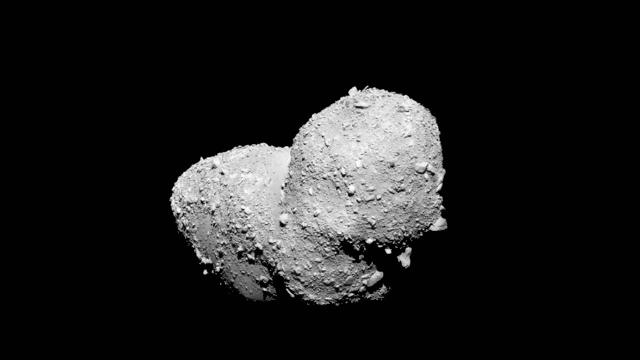
An infamous "space peanut" is fittingly salty: Tiny salt crystals have been found in a peanut-shaped asteroid, implying that the largest body of space rocks in the solar system may be richer in water than astronomers thought.
The team made the discovery by analyzing an Itokawa sample less than twice the width of a human hair collected by Hayabusa in 2005. From this tiny piece of space rock, the team extracted an even smaller sample about the size of a yeast cell.
It is the first time researchers have confirmed the presence of salt crystals that originated on the parent body of Itokawa and ruled out the possibility that they are the result of contamination, a problem that has plagued previous studies claiming to have found salt in meteorites of similar origins. By comparing before-and-after images of the sample, the team determined that the asteroid was unchanged during its time in storage, thereby ruling out the chance that it acquired the salt during this time.
"The terrestrial samples did not contain any sodium chloride, so that convinced us the salt in our sample is native to the asteroid Itokawa," said Shaofan Che, a postdoctoral fellow at the Lunar and Planetary Laboratory and lead author of the study. "We ruled out every possible source of contamination."
Samples from Itokawa are representative of a type of space rock called "ordinary chondrites," which come from S-type asteroids such as Itokawa. Ordinary chondrites make up almost 90% of meteorites discovered on Earth, but it is rare to find water-bearing minerals within them.
"It has long been thought that ordinary chondrites are an unlikely source of water on Earth," Zega said. "Our discovery of sodium chloride tells us this asteroid population could harbor much more water than we thought."
'In other words, the water here on Earth had to be delivered from the outer reaches of the solar nebula, where temperatures were much colder and allowed water to exist, most likely in the form of ice," Che said. "The most likely scenario is that comets or another type of asteroid known as C-type asteroids, which resided farther out in the solar nebula, migrated inward and delivered their watery cargo by impacting the young Earth."
The presence of water in this other family of asteroids via ordinary chondrites means that Earth might have gotten its water from much closer to the sun than previously thought.
"You need a large enough rock to survive entry and deliver that water," Zega said. "If it now turns out that the most common asteroids may be much 'wetter' than we thought, that will make the water delivery hypothesis by asteroids even more plausible."
"Once these ingredients come together to form asteroids, there is a potential for liquid water to form," Zega said. "And once you have liquids form, you can think of them as occupying cavities in the asteroid and potentially do water chemistry."
This bombardment would eventually break this larger body into smaller fragments, thus creating Itokawa, the team said.
Related stories:
The scientists found a sodium-rich silicate mineral called plagioclase in the sample, suggesting that the salt crystal within Itokawa has been present since the early days of the solar system, when it was part of a larger body.
"When we see such alteration veins in terrestrial samples, we know they formed by aqueous alteration, which means it must involve water," Che said. "The fact that we see that texture associated with sodium and chlorine is another strong piece of evidence that this happened on the asteroid as water was coursing through this sodium-bearing silicate."
OceanGate submersible and crew declared lost after discovery of debris near Titanic
After days of searching, the U.S. Coast Guard announced that the OceanGate submersible that went missing during a dive to the wreck of the Titanic was lost, along with its crew of five. Rear Adm. John Mauger said during a briefing in Boston that a remotely operated vehicle found the sub’s tail cone early today about 1,600 feet from the Titanic’s iconic bow. As the search continued, the ROV came across a second debris field that included pieces of the pressure chamber. Mauger said the arrangement
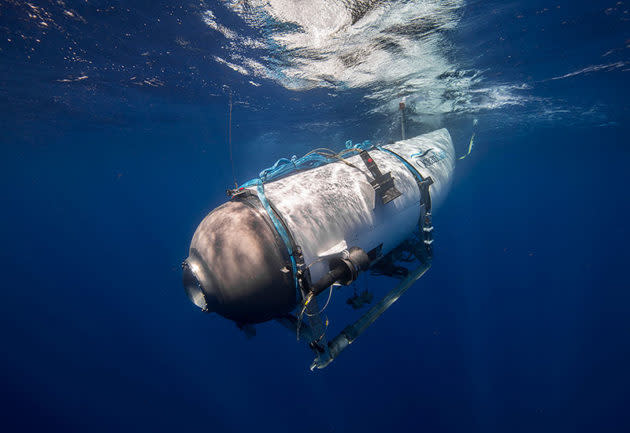
After days of searching, the U.S. Coast Guard announced that the OceanGate submersible that went missing during a dive to the wreck of the Titanic was lost, along with its crew of five.
Rear Adm. John Mauger said during a briefing in Boston that a remotely operated vehicle found the sub’s tail cone early today about 1,600 feet from the Titanic’s iconic bow. As the search continued, the ROV came across a second debris field that included pieces of the pressure chamber.
Mauger said the arrangement of the debris field, 400 miles off the shore of Newfoundland and 12,500 feet beneath the surface of the North Atlantic Ocean, was consistent with a “catastrophic implosion of the vessel.” Next of kin were quickly notified, he said, and a survey of the site will continue.
“It is a difficult day for all of us,” Mauger said.
“We now believe that our CEO Stockton Rush, Shahzada Dawood and his son Suleman Dawood, Hamish Harding, and Paul-Henri Nargeolet, have sadly been lost.
“These men were true explorers who shared a distinct spirit of adventure, and a deep passion for exploring and protecting the world’s oceans. Our hearts are with these five souls and every member of their families during this tragic time. We grieve the loss of life and joy they brought to everyone they knew.
“This is an extremely sad time for our dedicated employees who are exhausted and grieving deeply over this loss. The entire OceanGate family is deeply grateful for the countless men and women from multiple organizations of the international community who expedited wide-ranging resources and have worked so very hard on this mission. We appreciate their commitment to finding these five explorers, and their days and nights of tireless work in support of our crew and their families.
“This is a very sad time for the entire explorer community, and for each of the family members of those lost at sea. We respectfully ask that the privacy of these families be respected during this most painful time.“
OceanGate’s Titan submersible was in the midst of its third annual round of dives to the world’s best-known shipwreck. The five crew members began their dive to the Titanic on Sunday morning. Titan stayed in contact with the surface-based support team by sending out a series of “pings,” but those signals ceased about an hour and 45 minutes into the trip. The vessel was reported missing that evening, and a search led by the Coast Guard began on Monday.
The search was initially conducted by air and on the surface. ROVs capable of reaching the Titanic site joined the international effort over the past day or two. Airplanes equipped with special sensors had detected “banging” sounds from the area of the search, but today Mauger said experts determined that those sounds were not associated with Titan or its crew.
Experts said the most likely scenario is that Titan’s pressure chamber was breached and imploded during Sunday’s descent.
Asked about the prospects for retrieving the crew’s remains, Mauger said the underwater ROV operation would continue but couldn’t say whether debris or remains could be brought up. He noted that the ocean floor was an “incredibly unforgiving environment.”
In 2021 and 2022, OceanGate successfully conducted detailed surveys of the wreck of the Titanic, which sank in 1912 when it hit an iceberg during its first voyage from Britain to New York. More than 1,500 passengers and crew lost their lives in what became one of history’s best-known disasters at sea.
During last October’s GeekWire Summit, Rush said he wanted to bring researchers and citizen explorers to the site to further marine research and generate popular interest in the world’s oceans.
“We’ve had such amazing movies about space, and not as many about the ocean,” he said at the time. “What I wanted to do with the business was just move the needle, get people excited about the ocean, and discover what was out there.”
OceanGate developed a real-time monitoring system that used sensors to detect stresses in the hull and was meant to alert the pilot in case those stresses exceeded specified limits. But it shied away from putting Titan through the full process of verifying compliance with detailed shipping standards — known as “classing.”
“For a very similar tragedy, where warnings went unheeded, to take place at the same exact site, with all the diving that’s going on all around the world — I think it’s just astonishing,” Cameron said. “It’s really quite surreal.”
“All five crew members were true explorers, passionate about expanding humanity’s understanding of the world’s oceans. They died doing what they loved, so we should look to preserve their legacies as we begin the mourning process.
“I know that everyone wants answers about what happened, and there will certainly be a time for that. Right now, we need to give the families and the OceanGate crew time to absorb this tragic loss. After data is collected and analyzed over the coming days, weeks, and months, we will all have a better picture of what went wrong and what lessons we can take forward with us into future exploration expeditions.“
Scientists warn rapid melting of Himalayan glaciers will impact us all
Climate and water experts say every person on the planet should be worried about the dizzying rate at which glaciers in the Himalayas are melting.

The academic paper warns the ice and snow reserves in the Hindu Kush Himalayas (HKH) region are melting at an "unprecedented" rate and that the environmental changes to the sensitive region are "largely irreversible."
The HKH region spans roughly 2,175 miles, from Afghanistan to Myanmar, and is home to the highest mountains in the world, including Mount Everest. It contains the largest volume of ice on Earth outside the two polar regions and is the source of water for 12 rivers that flow through 16 Asian nations.
Those rivers provide fresh water to some 240 million people living in the HKH region, and about 1.65 billion people further downstream, the report says.
For all of those people, the melting of the glaciers would be a disaster. The report says they will face extreme weather events and crop loss that will force mass-migration.
The ICIMOD report lays out three potential scenarios for the glaciers of the HKH: If there is a 1.5-2 degree Celsius increase in the Earth's average temperature above pre-industrial levels, the glaciers will lose 30% to 50% of their ice volume by 2100. If the global temperature rises by 3 degrees Celsius, the glaciers could lose 75% of their ice and, with a 4-degree rise, the researchers say there will be a loss of up to 80% of the ice in the HKH.
The report notes that the Himalayan glaciers lost ice at a rate 65% faster between 2010 and 2019 than over the previous decade (2001-2010).
"This is a lot, this is alarming," Wester told CBS News."On human time scales, we have never seen glacial melt this rapid, this fast… this is unprecedented."
Global impact of the melting Himalayan glaciers
The impacts of the rapid glacial melt in the Himalayas will be felt around the world, Izabella Koziell, deputy director general of the ICIMOD, CBS News this week [video available at the top of this article].
"Even if this feels remote to us sitting far away, it is going to affect us — whether that is through mass people movement or sea-level rise. When the glaciers in the Himalayas melt, the ice sheets in Greenland, Arctic and Antarctic are also melting. This means there will be sea level rise, there will be quite dramatic changes in ocean circulation as a result of increase in fresh water into oceans, and this will have huge impacts on us," Koziell said.
"The people who are losing their livelihoods, of which there are 2 billion people — that's a quarter of the world's population — where will they go? They will have to go and find safer places and we will have to offer those safer places for them to live," Koziell said.
"Clarion call" for urgent climate action
Scientists are calling for urgent action to slow global warming to preserve as much of the ice mass in the Himalayas as possible.
"To prevent additional ice loss, greenhouse gas emissions must be reduced through the use of clean and renewable energy sources… cooperation among Himalayan nations and international organizations is required," Professor Anjal Prakash, an author on the United Nations' Intergovernmental Panel on Climate Change (IPCC), told CBS News.
"We need to reduce our greenhouse gas emissions as quickly as we can. The less melt we have, the better it is because it takes such a long time to recover from that loss," the ICIMOD's lead editor Wester told CBS News.
The U.N.'s IPCC says limiting warming to around 1.5 degrees Celsius requires global greenhouse gas emissions to peak before 2025, and be reduced by 43% by 2030. The world is not currently on course to keep those targets within reach.
"This is a clarion call," Wester told CBS News. "The world is not doing enough because we are still seeing an increase in the emissions year-on-year. We are not even at the point of a turnaround in terms of emissions."
"The change we are causing now will not stop even if we keep emissions at current levels," Koziell told CBS News, but she added that "all hope is not lost."
"If we commit to decarbonisation now, we still have an open window. We seriously need to keep that window open," Koziell said. "We need to seriously commit to reducing greenhouse gas emissions, and whatever investments we make now, will be a benefit for the future."
0 Likes
